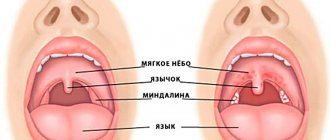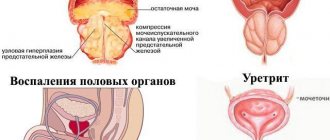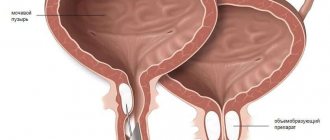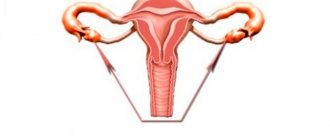Description
Pharyngitis is an inflammation of the back wall of the pharynx of an infectious, less often non-infectious nature.
Acute pharyngitis has code J02, chronic - J31.2 according to ICD-10. The pathology is manifested by a dry cough, a sensation of scratching and scratching, and soreness, which intensifies when swallowing. In acute cases, slight hyperthermia is possible. Usually the disease ends in recovery or proceeds favorably, occasionally complicated by abscesses, and becomes a trigger for the development of articular rheumatism. Pharyngitis is a widespread disease. Accounts for 5 to 9% of the total number of otolaryngological pathologies. The acute form occurs in people of all ages, is more often diagnosed in the cold season, and is usually combined with other ENT diseases: tonsillitis, rhinitis, laryngitis, sinusitis. The chronic course is typical for patients of the middle and older age groups. Men get sick more often than women.
Causes
The vast majority of cases of the disease are infectious in nature. In 70% of cases, pharyngitis is caused by viruses: rhinovirus, cytomegalovirus, members of the coronavirus and adenovirus families, and parainfluenza virus. The second place in prevalence is occupied by bacterial pharyngitis, which is most often provoked by streptococci.
Fungal forms of the disease are rarely detected; they usually develop against the background of prolonged antibiotic therapy, decreased immunity in severe chronic diseases, AIDS and other immunodeficiency states. In some cases, inflammation of the pharynx occurs as a result of an allergic reaction, after surgery, injury from foreign bodies, irritation with hot steam or liquid, contact with acids and alkalis.
Chronic pharyngitis becomes the outcome of the acute form of the disease. It is often observed in other ENT pathologies (rhinitis, sinusitis), which is associated with the spread of the inflammatory process, impaired nasal breathing and constant contact of the pharyngeal mucosa with cold atmospheric air. The abuse of drops to facilitate nasal breathing plays a certain negative role.
The chronic form of the pathology is often found in patients with gastroesophageal reflux and intestinal dysbiosis; it develops due to the reflux of acidic stomach contents into the pharynx or microflora disorders throughout all parts of the gastrointestinal tract. Sometimes the impetus for the appearance of symptoms of pharyngitis is periods of hormonal changes (menopause), untreated caries, lack of vitamin A. Risk factors include the following circumstances:
- Unfavorable environmental conditions.
- Occupational hazards: inhalation of dust, smoke, hot or cold air.
- Smoking, drinking alcohol.
- Allergic pathologies.
- Diabetes mellitus, severe heart, liver and kidney diseases.
- Decreased immunity.
Classification
Pharyngitis is classified according to several parameters:
- Acute, due to development : viral, bacterial, fungal, traumatic, allergic, caused by irritating factors.
- Chronic, by location : nasopharyngitis (the upper part of the pharynx is affected), mesopharyngitis (the oropharynx is involved), hypopharyngitis (the hypopharynx is affected).
- Chronic, by type : catarrhal, atrophic, hypertrophic.
Acute pharyngitis
A feeling of tickling, discomfort, difficulty swallowing, dryness and pain in the throat, sometimes radiating to the ears - who among us has not encountered such symptoms? The combination of these symptoms is most characteristic of acute pharyngitis, the incidence of which in the cold and warm seasons differs insignificantly.
Due to their development, acute pharyngitis is usually divided into viral, bacterial, fungal, allergic, traumatic (as a result of a foreign body or surgical intervention) and caused by exposure to irritating factors (hot liquid or steam, acids, alkalis, radiation, etc.) [1]. The most common form of acute inflammation of the pharyngeal mucosa is catarrhal pharyngitis during ARVI. It is known that approximately 70% of pharyngitis is caused by viruses, including rhinoviruses, coronaviruses, respiratory syncytial virus, adenovirus, influenza and parainfluenza viruses. It is believed that among the bacterial pathogens of acute pharyngitis, the leading role belongs to beta-hemolytic streptococcus of group A: 15–30% of cases in children and 5–17% of cases in adults, relatively rarely (<5%) can be caused by streptococci of groups C and G [6 ]. In 90% of cases, the bacterial flora of the posterior pharyngeal wall is represented by associations of 2–3 types of microbes [4].
Severe pain syndrome in acute pharyngitis is explained by the rich innervation of the pharynx [2]. The pharynx receives sensory, motor and autonomic innervation from the pharyngeal plexus, located on the outer surface of the middle pharyngeal sphincter under the buccal-pharyngeal fascia. This plexus is formed by the branches of the glossopharyngeal and vagus nerves, as well as sympathetic fibers of the superior cervical ganglion. Sensitive innervation of the pharynx is mainly carried out by the glossopharyngeal nerve, but in the area of the pharyngeal openings of the auditory tubes there are nerve connections with the second branch of the trigeminal nerve. The superior laryngeal nerve, a branch of the vagus, also takes part in the innervation of the laryngopharynx. The richness of nerve connections explains the possibility of irradiation of pain in diseases of the pharynx to the ear, lower jaw, etc. [3].
Medicines used for local treatment of pharyngitis can be divided into six groups: local antibiotics, antiseptics, local antimycotics, immunocorrectors, local anesthetics and anti-inflammatory drugs, homeopathic remedies [4]. Uncomplicated pharyngitis usually does not require systemic antibiotics [7]. Currently, in world otorhinolaryngology there is a tendency to use topical drugs to relieve inflammatory diseases. This is due to the increase in allergenicity in the population of most countries, the high percentage of side effects of systemic drugs and their low effect on inflammatory diseases of the pharynx [5].
It is optimal to prescribe medications for acute pharyngitis that not only have an antiseptic effect, but also can quickly relieve pain. One of these products is Strepsils Plus. Strepsils has been produced for more than 30 years and during this time it has taken a strong position in the global drug market [8].
Each tablet of Strepsils Plus contains two antibacterial components: 0.6 mg of amylmetacresol and 1.2 mg of 2,4-dichlorobenzyl alcohol, as well as 10.0 mg of lidocaine hydrochloride. Antibacterial components act on a wide range of bacteria (including Streptococcus pyogenes and Candida albicans). Thus, the drug Strepsils Plus has dual pharmacological activity, acting as a local antiseptic and anesthetic at the same time. Strepsils Plus in tablet form is prescribed to adults in a dosage not exceeding 8 tablets per day for 5–7 days.
During 2011, we observed 30 patients of both sexes (19 women and 11 men) aged 19 to 52 years with acute catarrhal pharyngitis who received Strepsils Plus as monotherapy (none of the patients received other systemic or local drugs, having antibacterial, non-steroidal anti-inflammatory, anesthetic effect). Patients received Strepsils Plus 1 tablet 5 times a day for 5 days.
At the time of initial treatment, all patients experienced pain in the throat, more pronounced when swallowing saliva, against the background of a cold, a feeling of rawness, dry throat and sore throat. During pharyngoscopy, patients showed local signs of acute inflammation: the mucous membrane of the pharynx (including the palatine tonsils) is hyperemic, mucous or mucopurulent deposits on the mucous membrane of the pharynx, individual follicles protruding on the back wall of the pharynx in the form of grains, swelling of the uvula.
The duration of treatment was 5 days, the follow-up period was 3 days.
The effectiveness of therapy was assessed according to the following criteria: clinical local symptoms (soreness in the throat, sore throat, feeling of dryness, sore throat at rest, sore throat when swallowing saliva, sore throat when eating); local signs of acute inflammation during pharyngoscopy (hyperemia of the pharyngeal mucosa, including the tonsils, mucous or mucopurulent deposits on the pharyngeal mucosa, individual follicles on the posterior wall of the pharynx protrude in the form of grains, swelling of the uvula). All symptoms were assessed on a 4-point scale, where: 0 points - absence of symptoms; 1 point - mild symptoms; 2 points - moderate severity of symptoms; 3 points - the severity of symptoms is significant.
| Rice. 1. Results of bacteriological examination of throat swabs before starting treatment with Strepsils Plus in the form of lozenges (n = 30) |
The safety of the drug was assessed based on parameters of vital functions (blood pressure (BP), heart rate (HR)) at each visit, as well as on the basis of taking into account all possible adverse events (AEs). An AE was defined as “any adverse medical event observed in a patient using a medical product, which may not have a cause-and-effect relationship with this type of treatment.” Lack of therapeutic effect was not considered an adverse event.
At initial presentation, low-grade fever was recorded in 10 patients (33.3%). The average body temperature in patients initially was 37.1 ± 0.5 °C; at the end of treatment, none of the patients had deviations in body temperature from the normative values.
A bacteriological study of culture of mucus from the pharynx before the start of treatment showed the predominance of coccal microflora (Fig. 1). In order to assess the bacteriological effectiveness of the study drugs, microbiological examination of cultures of mucus from the pharynx was performed in all patients both before the start of treatment and at the end of it.
| Rice. 2. Assessment of clinical effectiveness based on the dynamics of clinical local symptoms during treatment with Strepsils Plus (n = 30) |
During the therapy, all patients experienced a significant decrease or disappearance of symptoms such as a feeling of rawness, sore throat, dry throat, sore throat at rest, when swallowing saliva and when eating. Already within the first day of using Strepsils Plus, the severity of all symptoms significantly decreased. By the time the drug was completed (day 5), most patients had no local symptoms. The assessment of clinical effectiveness based on the dynamics of clinical local symptoms is presented in Table. 1 and in Fig. 2.
By the end of treatment, the vast majority of patients had no pharyngoscopic signs of acute inflammation of the pharynx: the complete disappearance of hyperemia of the pharyngeal mucosa, including the palatine tonsils, was recorded in 77% of patients, the disappearance of mucous and mucopurulent plaque - in 97%, the disappearance of follicles in posterior wall of the pharynx - in 83%, disappearance of swelling of the uvula - in 90% of patients (Table 2).
The results of a repeated bacteriological study showed a significant decrease in the number of cases of detection of pathogenic and opportunistic microflora during treatment with Strepsils Plus (Table 3).
Compliance was assessed as 100%. Patients observed the intervals between doses of the drug and completed the recommended course of treatment. During the study, no AEs were recorded while taking the study drugs. All patients completed the course of therapy without side effects.
Thus, as the results of the study showed, therapy with Strepsils Plus in patients with pain syndrome due to acute pharyngitis is highly effective. The ability of Strepsils Plus to reduce local symptoms was confirmed by subjective and objective data.
Literature
- Ryazantsev S.V. Etiopathogenetic therapy of acute pharyngitis: Methodological recommendations. St. Petersburg, 2007. 40 p.
- Akulich I.I., Lopatin A.S. Treatment of acute and chronic pharyngitis with the drug imudon // Treating Doctor. 2005. No. 9. pp. 90–91.
- Ryabova M. A. Sore throat - is it always a disease of the upper respiratory tract? // Directory of a polyclinic doctor. 2010. No. 1. P. 32–37.
- Luchsheva Yu. V., Izotova G. N. Local therapy for pharyngitis // Breast cancer. 2011. T. 19. No. 6.
- Egorova O. A. The feasibility of using local antimicrobial drugs in the treatment of upper respiratory tract infections // Farmateka. 2006. No. 5, p. 107–109.
- Shpynev K.V., Krechikov V.A. Modern approaches to the diagnosis of streptococcal pharyngitis // KMAH. 2007. T. 9 (1). pp. 20–33.
- Lopatin A. S. Treatment of acute and chronic pharyngitis // RMZh. 2001. T. 9. pp. 16–17.
- Magomedov M.M., Kryukov A.I., Uzdennikov A.A. Strepsils plus in the treatment of inflammatory diseases of the pharynx // Bulletin of Otorhinolaryngology. 1999. No. 1. P. 51–52.
O. V. Zaitseva, Candidate of Medical Sciences
Federal State Institution NCC of Otorhinolaryngology FMBA of Russia, State Institution MONIKI named after. M. F. Vladimirsky, Moscow
Contact information about the author for correspondence
Symptoms
Photo: levrudin.ru
Acute pharyngitis
The leading symptoms are soreness and soreness in the throat, slight soreness that worsens when swallowing. When the auditory tubes are involved, congestion and pain in the ears are noted. Infectious pharyngitis usually develops simultaneously with rhinitis, tonsillitis and other acute inflammatory diseases of the ENT organs, so the patient may be bothered by a runny nose, pain in the projection of the tonsils, and other manifestations.
Intoxication syndrome is not clearly expressed. Weakness and an increase in temperature to subfebrile levels may be observed. Cases of significant hyperthermia are usually associated with severe inflammation of adjacent organs or are observed in young children. Sometimes there is an increase in regional lymph nodes. Non-infectious pharyngitis occurs with normal temperature and is not accompanied by inflammation of neighboring structures.
Chronic pharyngitis
General condition is satisfactory. For catarrhal and hypertrophic forms, a typical feeling of awkwardness, rawness, and tickling in the throat is typical. Patients report discomfort when swallowing, the sensation of a foreign object that does not prevent the swallowing of food or liquid, but forces frequent swallowing movements. Patients are bothered by a cough that occurs due to the accumulation of thick discharge. Hypertrophic pharyngitis occurs with more severe symptoms.
The main manifestation of atrophic pharyngitis is a feeling of dryness in the throat. Possible dry cough, discomfort when swallowing, bad breath. Due to the dryness of the throat, patients take small sips of water whenever possible, especially during a long conversation.
Complications
Complications of pharyngitis are quite rare. Acute bacterial pharyngitis is sometimes complicated by the formation of a paratonsillar or parapharyngeal abscess. When the infection spreads, laryngitis or tracheitis occurs. Against the background of acute streptococcal pharyngitis, some patients manifest rheumatism with involvement of the heart and joints.
Classification of pharyngitis
- Acute pharyngitis
develops immediately after exposure of the pharyngeal mucosa to an aggressive factor (infection, irritant gas, etc.). The course of acute pharyngitis is favorable. - Chronic pharyngitis
can be a consequence of untreated acute pharyngitis, as well as an independent disease that occurs with prolonged irritation of the pharyngeal mucosa. In the development of chronic pharyngitis, phases of exacerbation and remission are noted.
Diagnostics
Photo: medborisovka.ru
The main diagnostic method is pharyngoscopy. Taking into account the form of the disease, the otolaryngologist observes the following picture:
- Acute pharyngitis . Swelling, redness, and mucopurulent plaque are detected. Sometimes the process involves the arches and tonsils. Rich red granules may be detected - foci of inflamed lymphoid tissue.
- Catarrhal pharyngitis . The mucous membrane is pasty, somewhat thickened. Congestive hyperemia is noted, and accumulations of viscous mucus are detected.
- Hypertrophic pharyngitis . The same signs are visualized as in the catarrhal form, but more pronounced. With a special type of hypertrophic process - granulosa pharyngitis, dilated veins and small semicircular dark red islands, which are accumulations of lymphoid tissue, are visible.
- Atrophic pharyngitis . The mucous membrane is dull, pale, dry, shiny, with crusts and viscous discharge. Vessels are visible through the thinned mucosa.
Laboratory tests are informative for streptococcal pharyngitis. Streptatetest and culture of the discharge help determine the type of pathogen. Acute pharyngitis is differentiated from ARVI, catarrhal tonsillitis, diphtheria, measles, scarlet fever. The hypertrophic form is distinguished from pharyngeal hyperkeratosis.
Treatment
Photo: volkovysk.by
Treatment is carried out on an outpatient basis. The indication for hospitalization is the development of complications, the spread of inflammation to neighboring organs, accompanied by a significant deterioration in the patient’s condition. Conservative therapy includes drug and non-drug methods:
- Protective mode . The patient is advised to stop smoking, drinking alcohol, and eating foods that irritate the mucous membranes. You should avoid staying in dusty rooms or in the cold.
- Drug therapy . The main role in drug therapy for pharyngitis is given to local agents. If the disease is bacterial in nature and complications develop, antibiotic therapy may be possible.
- Physiotherapy . For acute pharyngitis, laser therapy, electrophoresis with potassium iodide, paraffin treatment and mud applications to the submandibular area are used. For atrophic pharyngitis, nicotinic acid electrophoresis is prescribed.
Sanitation of infectious foci is necessary: carious teeth, paranasal sinuses, tonsils. For chronic granular pharyngitis, cryotherapy, laser coagulation and ultrasonic disintegration of granules, and radio wave shading of the pharynx are used. Novocaine blockades of the lateral parts of the pharynx are performed.
Patients with pharyngitis caused by gastroesophageal reflux require treatment of the underlying disease by a gastroenterologist. In the presence of endocrine and somatic pathologies, observation by an endocrinologist, cardiologist, nephrologist, hepatologist, and other specialists is indicated.
Surgical interventions are required when complications develop, nasal breathing disorders due to other diseases of the ENT organs. For patients with parapharyngeal and paratonsillar abscesses, the abscesses are opened and drained. For chronic tonsillitis, a tonsillotomy or tonsillectomy is performed. For diseases of the nasal cavity, septoplasty, polypotomy, and vasotomy are performed.
Medicines
Photo: peroxide.ru
Systemic antibiotic therapy is carried out to prevent the development of purulent complications, the spread of infection to neighboring organs in case of severe intoxication, febrile temperature in patients with acute streptococcal pharyngitis. Penicillins, cephalosporins, and macrolides are effective. The rest of the treatment plan is determined by the type of pathology. For acute pharyngitis the following are used:
- Aerosol products . For spraying, benzydamine, stopangin, biclotymol, allantoin, propolis, fusafungin and other aerosols are used.
- Medicines for resorption . Patients are prescribed absorbable tablets (ambazon, antiangin), dragees and lozenges (strepsils, septolete), lozenges (dyclonine).
- Other drugs . To improve the condition of the immune system, immunomodulators and general immunostimulants are recommended. For allergic pharyngitis, antihistamines are indicated.
Folk remedies
Photo: liktravy.ua
For chronic pharyngitis, lubricating the pharynx with a mixture of 0.5% Lugol and glycerin is effective. Swelling of the pharynx in the hypertrophic form decreases after rinsing with a 1% solution of table salt or pharmaceutical sea salt. To remove crusts and viscous discharge in the atrophic form, add a few drops of iodine to the saline solution.
The following folk remedies are also widely used in the treatment of acute and chronic pharyngitis:
- Herbal decoctions . You can gargle with decoctions of calendula, St. John's wort, lungwort, sage, chamomile and other medicinal herbs with anti-inflammatory effects. A tablespoon of herb is poured into a liter of water, boiled for 2-3 minutes, then used warm several times a day.
- Tincture of calendula . A spoonful of flowers requires 100 grams of 70% alcohol. The solution is infused for a week and filtered. To rinse, add 1 tablespoon of tincture to a glass of water.
- Honey, propolis and aloe . The honey is kept in the mouth until completely absorbed. Propolis is used to lubricate the pharyngeal mucosa. The most effective remedy is a mixture of 50 g of melted honey, 10 ml of pharmaceutical propolis tincture and a tablespoon of crushed aloe leaves. The mixture is used to lubricate the throat 2 times a day.
- Honey and sea buckthorn . Honey and fresh sea buckthorn berries are mixed in equal proportions, kept for a week, ground through a sieve, and then used for resorption 3 times a day.
Along with the listed methods, it is recommended to do inhalations with soda, salt, mineral water, infusions and decoctions of herbs. You can drink herbal, milk and alkaline teas to soothe your throat. For atrophic pharyngitis, applying sea buckthorn, peach, thuja, rose hip, calendula or tea tree oils to the mucous membrane is effective.
Traditional methods cannot be used at high fever, severe sore throat, progressive deterioration of the condition, allergies to components, severe liver and kidney diseases. Before using folk remedies, you should consult your doctor, because some components may be incompatible with medications prescribed by a specialist.
The information is for reference only and is not a guide to action. Do not self-medicate. At the first symptoms of the disease, consult a doctor.
Prevention of pharyngitis
- Hardening the body.
- Eliminating harmful factors
(smoking, drinking alcohol), restoring impaired nasal breathing, increasing the body's defenses (use of immunocorrector drugs, IRS-19). - Using a humidifier in the room
. Sometimes a sore throat when you wake up is caused by sleeping with your mouth open. Typically, the air entering the throat and lungs is moistened in the nose. But when breathing through the mouth, this stage is skipped, leaving the throat dry and irritated. In this regard, otolaryngologists recommend purchasing a humidifier for the bedroom. - Raised headboard
. One of the reasons for a sore throat in the morning, in addition to sleeping with your mouth open, is the reflux of stomach acids into the throat during the night. These substances are extremely irritating to the sensitive tissues of the throat. Avoid this problem by raising the head of your bed so that the head end is 10-15 cm higher than the foot end. But don’t just put a pillow under your head: bending over will increase pressure on the esophagus, and this will make it even worse. - Don't eat or drink
for an hour or two before bed. - Change your toothbrush more often
. Surprisingly, your toothbrush may be supporting or even causing your sore throat, doctors say. It turns out that bacteria accumulates on the bristles, and any damage to the gums during brushing allows them to enter the body. So, as soon as you start to feel that you are getting sick, change your toothbrush to a new one. Often this is enough to stop the disease in its early stages. Also refresh your brush when you feel better. This will protect you from re-inflammation. From a preventive point of view, it is recommended to change your toothbrush every month, and also not to store it in a humid bathroom atmosphere, which promotes the accumulation of bacteria. If you think it's expensive to buy so many brushes, consider the cost of just one visit to the doctor's office. Either way, staying healthy over time is worth it.










